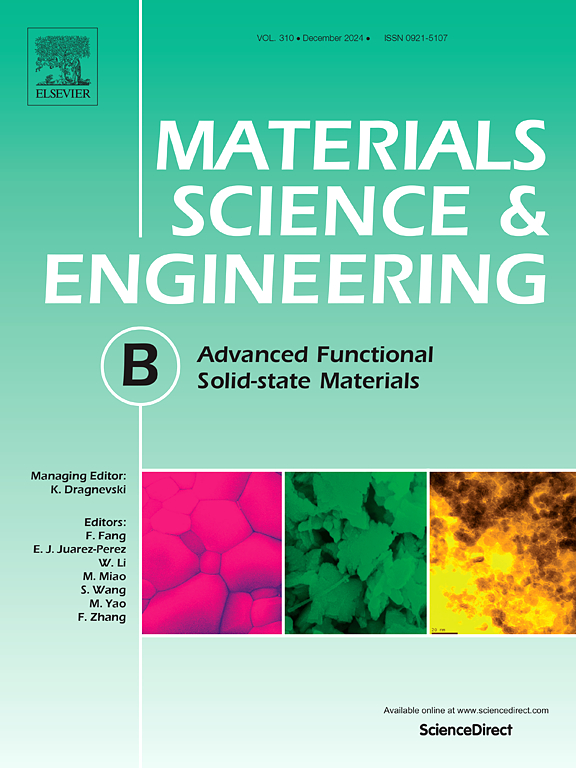Liquid metal-encapsulated spherical Al2O3/PVA aerogel composites for high-efficiency electromagnetic interference shielding and enhanced mechanical properties
IF 3.9
3区 材料科学
Q2 MATERIALS SCIENCE, MULTIDISCIPLINARY
引用次数: 0
Abstract
Liquid metal (LM) is a promising candidate for electromagnetic interference (EMI) shielding due to its exceptional electrical conductivity and ease of processing. However, the high surface tension of LM leads to poor compatibility with polymers, significantly hindering its application in EMI shielding. Here, Al2O3@LM/borax crosslinked PVA (Al2O3@LM/BCP) aerogel is prepared using mechanical grinding, melting crosslinking, and directional freeze-drying techniques. The core–shell structure of Al2O3@LM, prepared by mechanical grinding, effectively reduces the high surface tension of LM, enhancing compatibility with the PVA matrix. Due to its freeze-dried porous structure and superior LM conductivity, the Al2O3@LM/BCP composite aerogel exhibits outstanding electrical conductivity of 312.5 S/m, efficient electromagnetic interference shielding efficiency (EMI SE) of 80.9 dB, and an excellent SEA/SET ratio of 83.9 %. This work offers a straightforward strategy for developing EMI shielding aerogels with excellent mechanical properties for EMI protection applications.

求助全文
约1分钟内获得全文
求助全文
来源期刊

Materials Science and Engineering: B
工程技术-材料科学:综合
CiteScore
5.60
自引率
2.80%
发文量
481
审稿时长
3.5 months
期刊介绍:
The journal provides an international medium for the publication of theoretical and experimental studies and reviews related to the electronic, electrochemical, ionic, magnetic, optical, and biosensing properties of solid state materials in bulk, thin film and particulate forms. Papers dealing with synthesis, processing, characterization, structure, physical properties and computational aspects of nano-crystalline, crystalline, amorphous and glassy forms of ceramics, semiconductors, layered insertion compounds, low-dimensional compounds and systems, fast-ion conductors, polymers and dielectrics are viewed as suitable for publication. Articles focused on nano-structured aspects of these advanced solid-state materials will also be considered suitable.
 求助内容:
求助内容: 应助结果提醒方式:
应助结果提醒方式:


